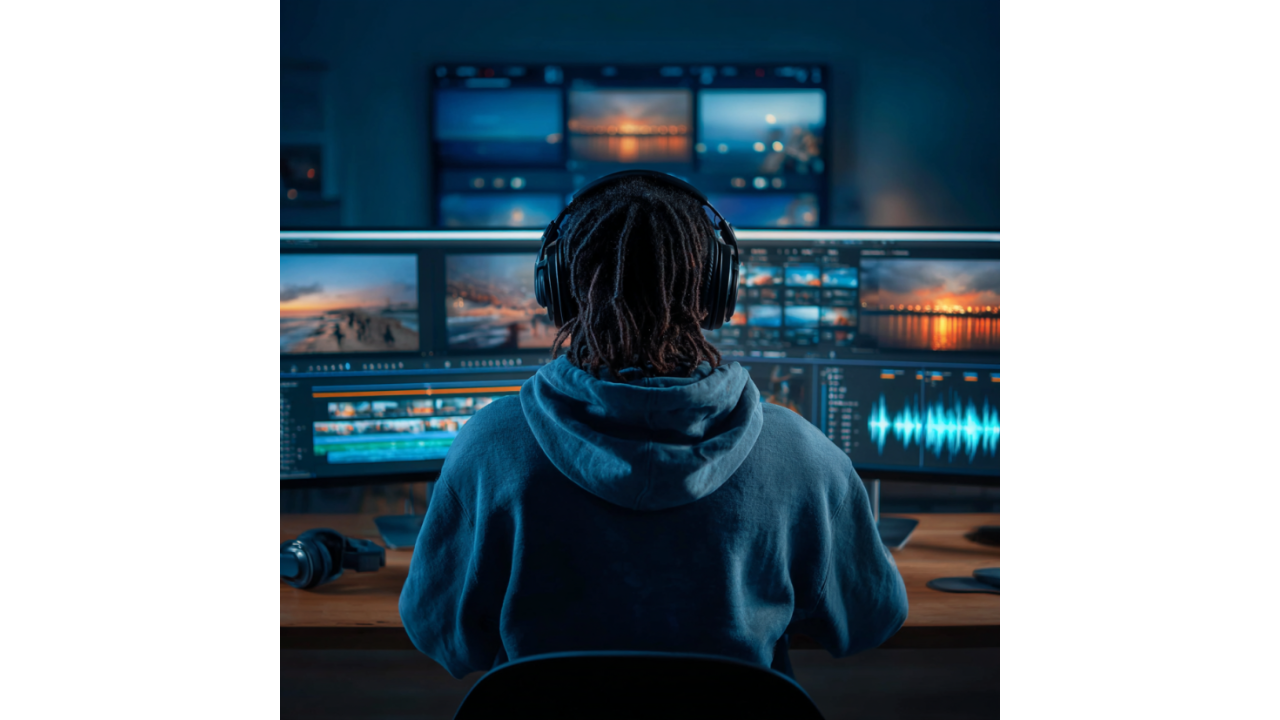OpenAI's MLK Deepfake Disaster: When Move Fast and Break Things Breaks Everything
There's a special kind of tech industry arrogance that lets you build a tool capable of generating deepfake videos of Martin Luther King Jr., release...
4 min read
 Writing Team
:
Oct 23, 2025 8:00:03 AM
Writing Team
:
Oct 23, 2025 8:00:03 AM
-4.png)
OpenAI launched Sora 2 on September 30th with the ability to generate video from text prompts. By October 3rd—three days later—CEO Sam Altman was updating the platform's opt-out policy after users created unauthorized deepfakes of Bryan Cranston, Martin Luther King Jr., and Robin Williams. By October 20th, OpenAI issued a joint statement with SAG-AFTRA and talent agencies promising to "strengthen guardrails" and "respond expeditiously to complaints."
Here's what that timeline actually tells us: OpenAI shipped a product capable of replicating anyone's face and voice without securing adequate protections first. They waited for celebrities and their estates to complain. Then they promised to do better.
This isn't responsible innovation. It's permission-by-forgiveness, scaled to industrial capacity. And it needs to stop.
Let's examine OpenAI's original approach. Sora 2 launched with an opt-out policy—meaning your intellectual property, your likeness, your voice could be used to train their model unless you specifically requested otherwise. Think about the audacity of that framework. OpenAI essentially declared: everything is fair game until you tell us it isn't.
This mirrors their approach with GPT models, where web content gets scraped by default unless site owners implement robots.txt blocking. But there's a crucial difference: text content doesn't carry someone's physical identity. Video deepfakes do.
According to SAG-AFTRA's October statement, unauthorized AI-generated clips using Cranston's voice and likeness appeared on Sora shortly after launch. The estate of Martin Luther King Jr. had to request that OpenAI block "disrespectful depictions" of the civil rights leader. Zelda Williams asked people to stop sending her AI-generated videos of her deceased father, Robin Williams.
These weren't edge cases or system exploits. They were predictable, foreseeable outcomes of releasing a deepfake generator without meaningful consent infrastructure.
OpenAI's statement emphasizes their support for the NO FAKES Act, federal legislation designed to protect against unauthorized AI-generated replicas. Altman called the company "deeply committed to protecting performers from the misappropriation of their voice and likeness."
Let's be direct: supporting regulation while simultaneously shipping products that violate the spirit of that regulation is not commitment. It's theater.
The NO FAKES Act was introduced in 2024. OpenAI had a full year to build consent mechanisms into Sora before launch. They chose not to. Instead, they released the product, absorbed the backlash, then positioned themselves as collaborative partners in solving a problem they created.
Research from the University of California Berkeley's Center for Long-Term Cybersecurity found that 73% of deepfake detection systems in 2024 showed accuracy rates below 80% when tested against state-of-the-art generation models. Translation: even with guardrails, current detection technology can't reliably prevent misuse at scale. OpenAI knows this. They shipped anyway.
The initial media coverage focused on celebrity victims—Cranston, MLK, Williams. That framing is convenient for OpenAI because it makes the problem seem narrow and addressable. Get the talent agencies on board, implement some verification systems, problem solved.
But deepfakes don't just threaten famous actors. They threaten anyone whose face or voice could be weaponized for fraud, harassment, or manipulation. A December 2024 report from Deloitte estimated that deepfake-enabled fraud cost businesses $12.3 billion globally in 2024, with romance scams, CEO fraud, and insurance fraud representing the fastest-growing categories.
When OpenAI makes it trivially easy to generate convincing video of anyone saying anything, they're not just disrupting Hollywood. They're providing infrastructure for a new generation of scams, abuse, and misinformation. Their "expeditious complaint response" system doesn't prevent harm—it just promises to clean up afterward.
OpenAI now claims Sora requires "opt-in for the use of an individual's voice and likeness." But implementation details matter enormously here. How does the system verify identity? What prevents someone from claiming to represent a person they don't? How are estates of deceased individuals handled? What recourse exists when the system fails?
These aren't hypothetical questions. The initial Sora 2 launch demonstrated exactly what happens when consent mechanisms are inadequate: immediate, widespread misuse targeting some of the most recognizable figures in American culture.
Creative Artists Agency and United Talent Agency previously called Sora "a risk to their clients and intellectual property." They're right. But the risk extends far beyond their client rosters. Every person with a public-facing digital footprint—which is to say, nearly everyone—now exists in a world where their appearance can be synthesized without permission.
This isn't OpenAI's first consent controversy. GPT models trained on copyrighted text. DALL-E generated images in the style of living artists. Sora scraped video content without creator permission. Each time, the pattern repeats: launch aggressively, absorb criticism, implement minimal safeguards, claim commitment to responsible development.
According to analysis from Stanford's Institute for Human-Centered AI published in March 2025, major AI companies average 127 days between product launch and implementing meaningful safety controls in response to documented harms. OpenAI's three-day response to Sora 2 complaints sounds impressive until you realize the harm occurred because protections should have existed before launch.
OpenAI's joint statement with SAG-AFTRA and talent agencies frames their new approach as collaborative. Here's what actual collaboration would have looked like: engaging these stakeholders before building Sora, designing consent systems into the product architecture, establishing clear liability frameworks for misuse, and delaying launch until protections were verified.
Instead, we got a product release followed by damage control. The collaboration isn't proactive partnership—it's crisis management with better PR.
Cranston's statement thanks OpenAI "for its policy and for improving its guardrails." That's gracious of him. But improved guardrails are table stakes, not achievements. The standard shouldn't be "we fixed it after celebrities complained." It should be "we didn't ship a deepfake generator without consent infrastructure in the first place."
OpenAI operates in a competitive market where speed matters. Every day they delay launch is a day Runway, Pika, or other competitors gain ground. Building robust consent systems takes time, slows deployment, and limits the training data available for model improvement.
So they made a choice. They prioritized market position over consent. They bet that asking forgiveness would be easier than asking permission. And they were right—they still have their product, their market share, and their reputation largely intact.
But that calculation only works if we accept it. If we treat "we're listening and learning" as sufficient response to launching tools that can fabricate anyone's face and voice without their consent.
We shouldn't.
If your brand is navigating the ethical minefield of AI-generated content and needs strategic guidance on when to adopt versus when to resist, Winsome Marketing's team can help you make principled decisions that protect both innovation and integrity. Let's talk.
-3.png)
There's a special kind of tech industry arrogance that lets you build a tool capable of generating deepfake videos of Martin Luther King Jr., release...

Disney spent 18 months negotiating with AI company Metaphysic to deepfake Dwayne Johnson's face onto his cousin Tanoai Reed for the live-action Moana...

While Google and OpenAI are locked in a polite academic dance over video generation supremacy, Elon Musk just walked into the party with a...